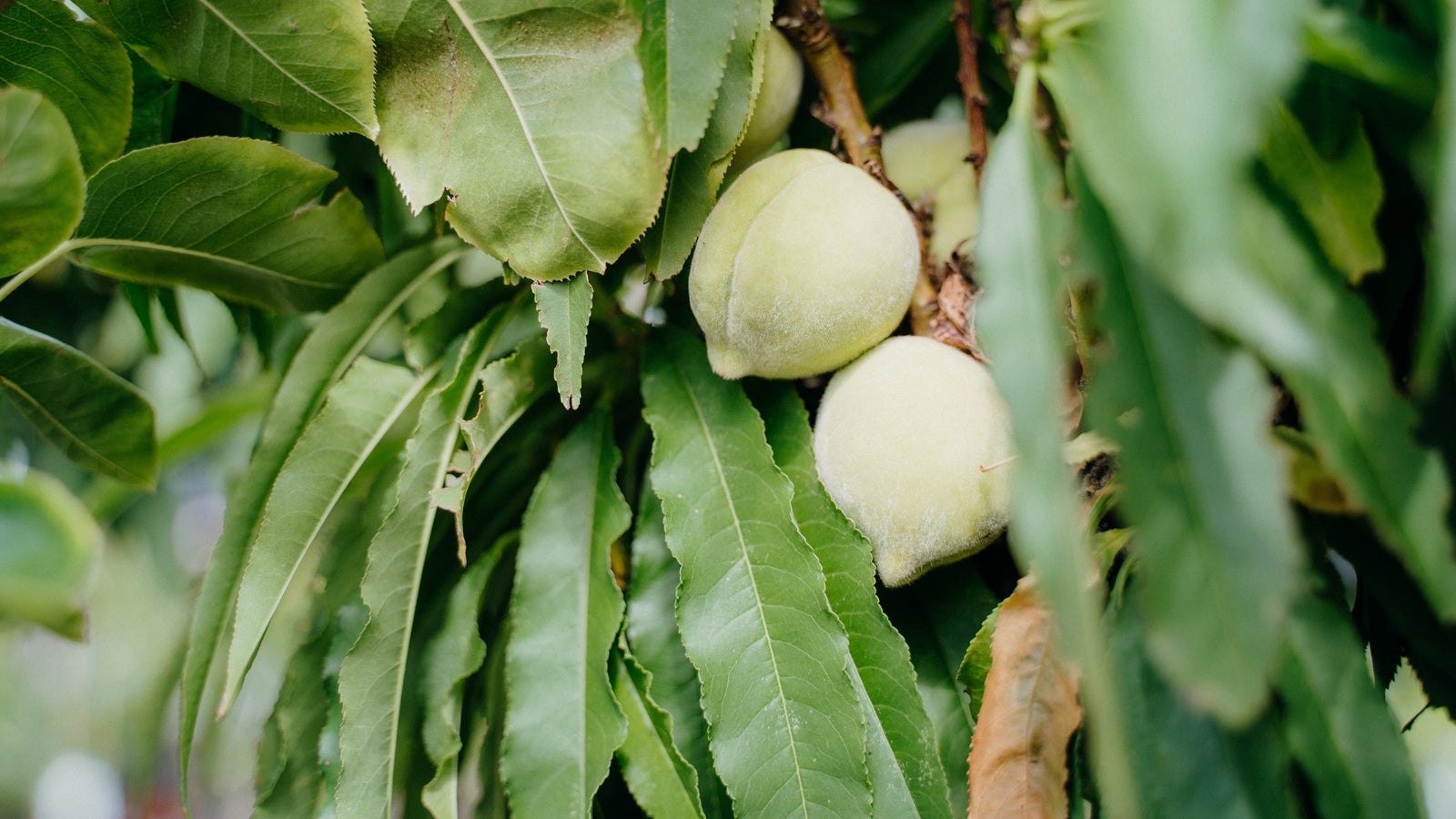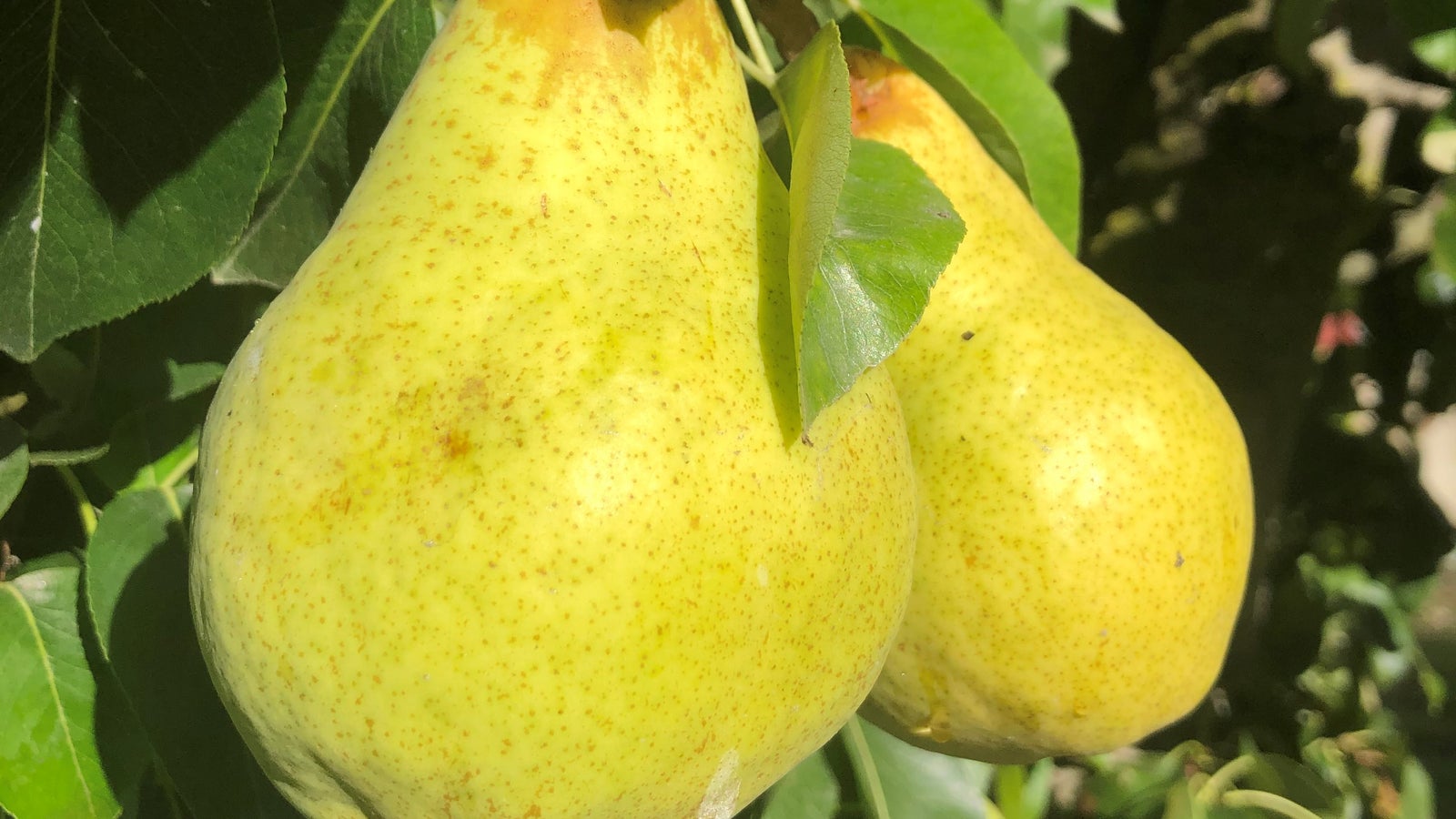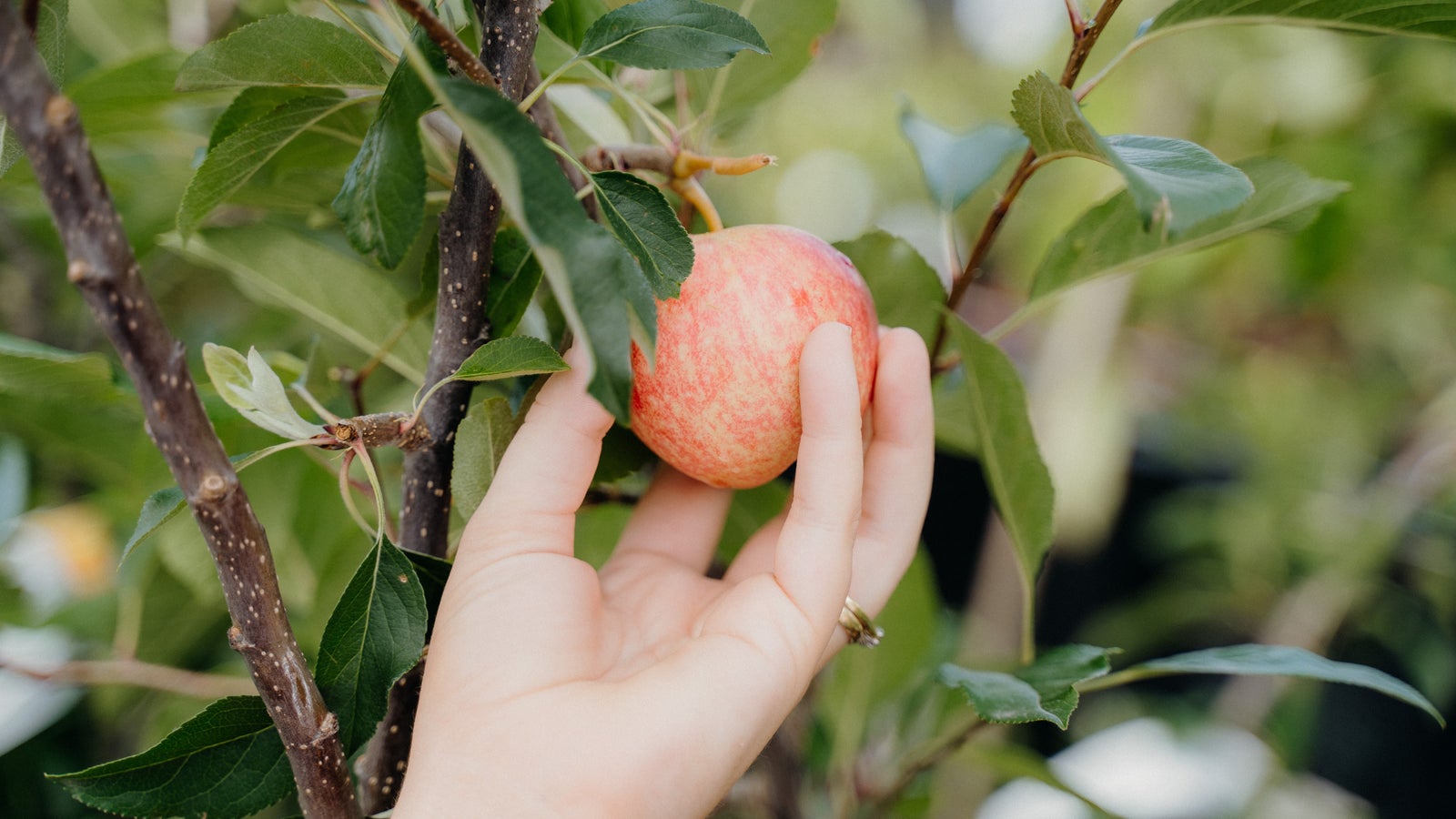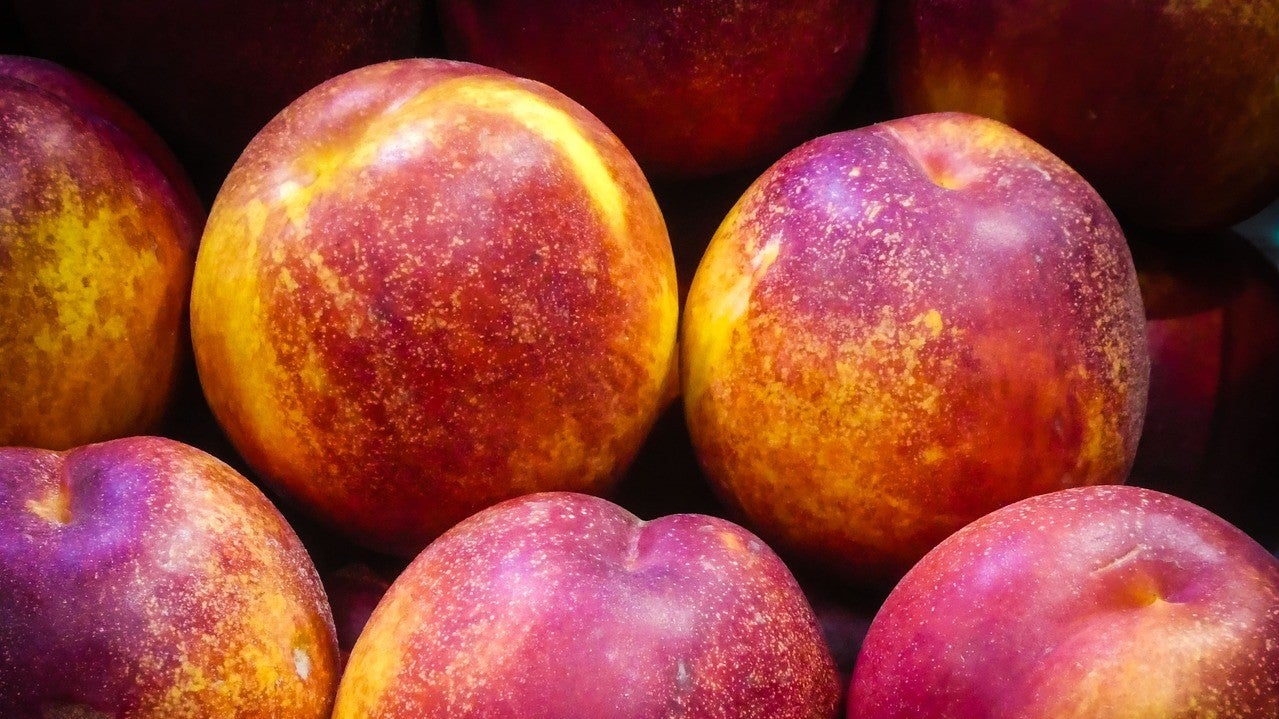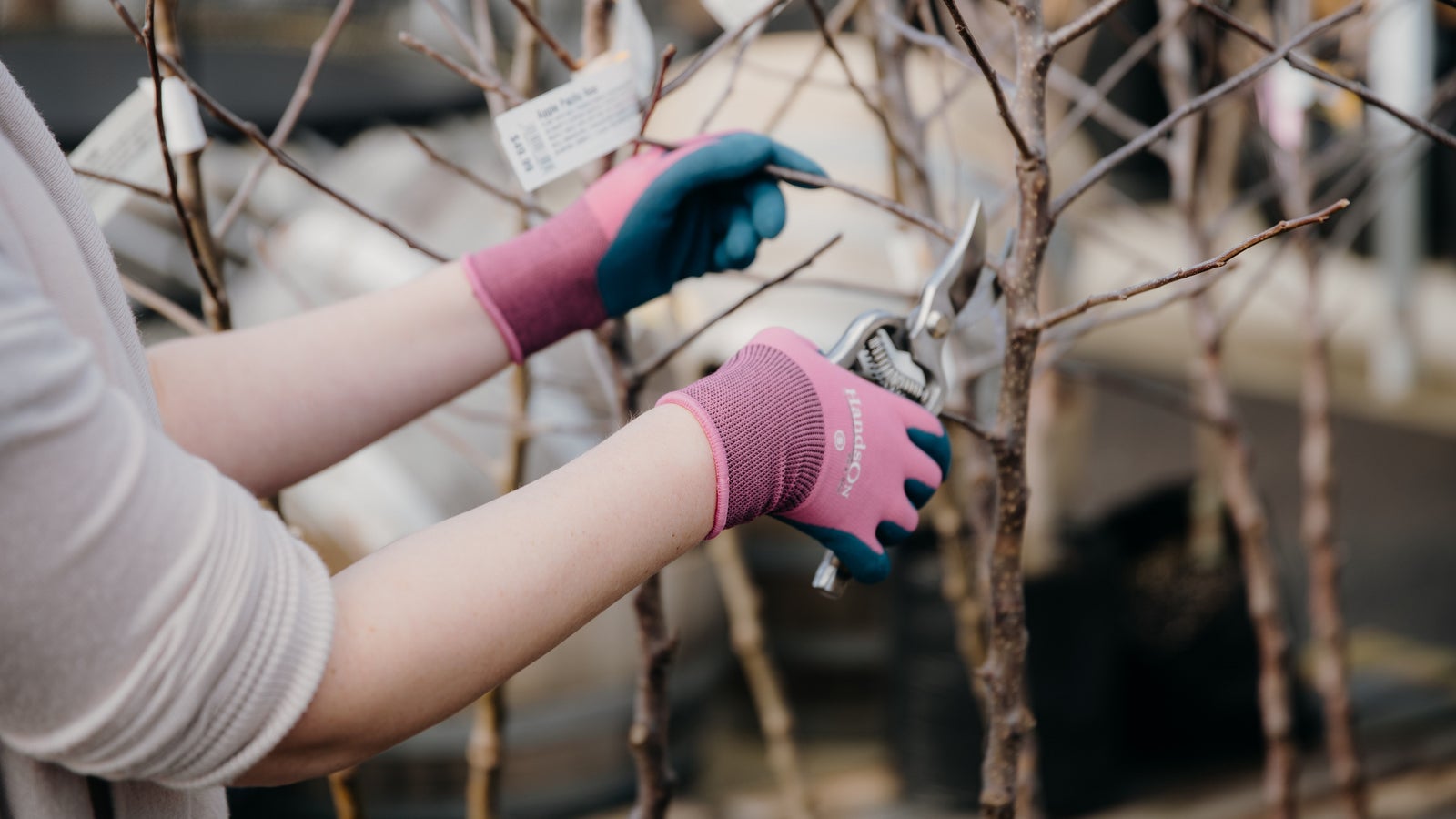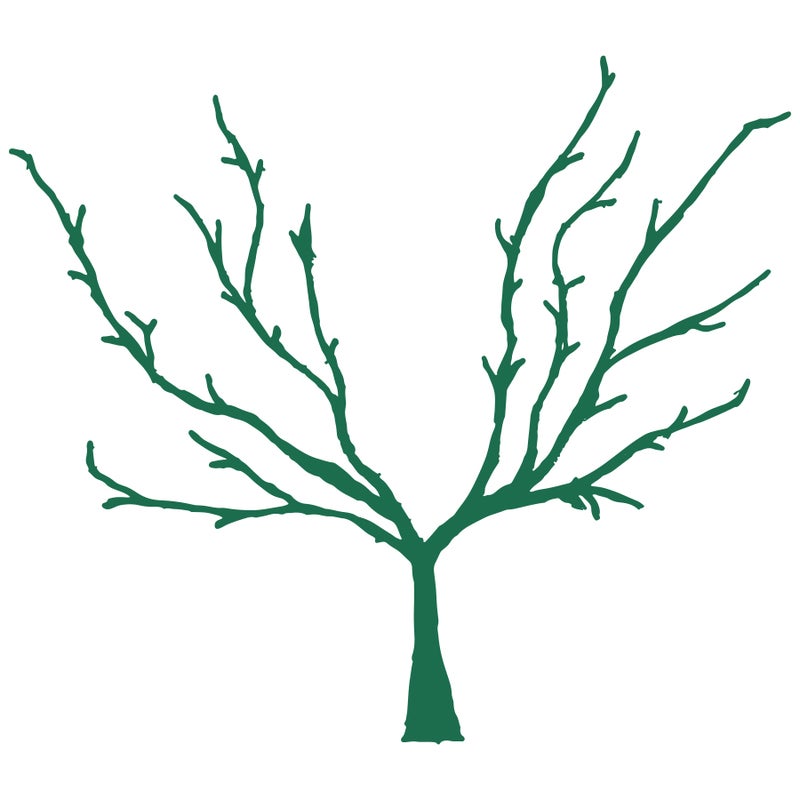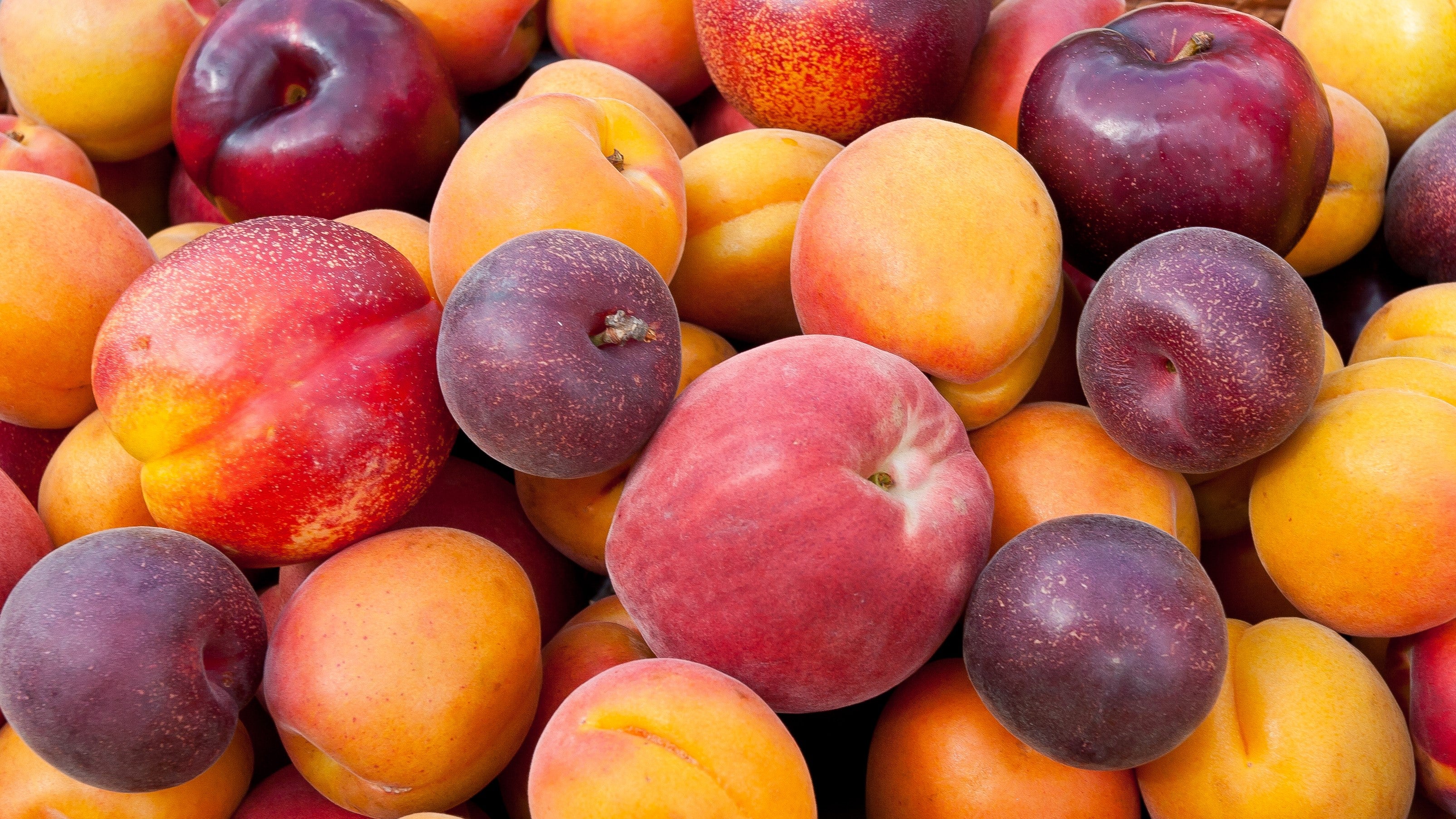
Deciduous Fruit Trees
02 Jun, 2021
Peach
Available from late-June
Known for their slightly fuzzy texture, multiple cooking uses and unique flavour, peaches are best harvested from the tree when they give a little when squeezed and are a nice, rich skin colour. All peaches are self-fertile and do not need another variety to set fruit.
Golden Queen
A classic peach that originated in New Zealand in 1908. The best peach for bottling, it has a slightly ‘flat’ look to it. It has a firm flesh making it great for lunches as well. Best pruned into an ‘open vase’ shape for easy harvesting and good airflow.
Fruit: Orange to deep yellow skin and firm yellow flesh.
Harvest: February.
Tree size: 5–6 m; prune for controlled height.
Pixzee (dwarf)
A dwarf peach that can easily be grown in a large pot for a sunny deck, small garden or balcony. There is no need to prune due to its compact growing habit.
Fruit: Orange to red skin, with sweet yellow flesh.
Harvest: January.
Tree size: 1.8m.
Pear
Available from mid-July
With fruit perfect for bottling, cooking and eating straight off the tree, pear trees come into stores along with apples in mid-July. Make an order either instore or over the phone now on 0800 PLANTS to secure your favourite varieties! Most pears need pollinationors to produce fruit, so two different varieties in the same area is recommended.
Taylor’s Gold
A European variety that is best paired with a pollinator such as Packham’s Triumph, Beurre Bosc or a Nashi varieties. The fruit is described as smooth and creamy when ripe with a delicate aroma.
Fruit: Deep golden skin with a slight rose blush and fantastic flavor.
Harvest: April–May.
Tree size: 5–8m; prune for controlled height.
Pollinators: Beurre Bosc, Packham’s Triumph, Williams bon Cretien, Garden Belle, Nashi Hosui and Nashi Nijiseiki.
Garden Belle® (dwarf)
The first true dwarf pear variety in New Zealand. An early harvesting pear in mid-summer that is also self-fertile, perfect for smaller gardens that can only fit a couple of fruit trees. Perfect for eating straight off the tree.
Fruit: Soft-green skin with a smooth textured flesh.
Harvest: February
Tree size: 3m.
Pollinators: Self-fertile but can also be paired with Nashi Nijiseiki, Packham’s Triumph, Seckel, Taylor’s Gold, Willian bon Cretien and Beurre Bosc.
Apple
Available from mid-July
Our apple trees come in a few weeks later than our plums and peaches. The fruit ripens later in mid-autumn in Auckland. Dwarf varieties will take two years to fruit once planted, however normal apples may take up to three years depending on the soil and placement.
Royal Gala
Perfect for growing in Auckland and known as one of the world’s most beautiful apples, these are best picked and eaten fresh from the tree and are great for fruit salads.
Fruit: Red skin with very crisp, sweet and juicy white flesh.
Harvest: April.
Tree size: 5–6m; prune for controlled height.
Pollinators: Adore, Peasgood Nonsuch, Golden Delicious, Granny Smith, Monty’s Surprise and Initial to name a few.
Blush Babe™ (dwarf)
A miniature apple tree with a compact, mop-top growth habit that means it is perfect for smaller Auckland gardens or even in a large container on your balcony. Kids love these as they can harvest the apples easily due to their height.
Fruit: Green skin with a red blush and sweet white flesh.
Harvest: March.
Tree size: 2m.
Pollinators: Blush Babe is self-fertile.
Pacific Rose™
A special New Zealand apple with an incredibly attractive rosy-red colour to the fruit. This apple has a very rich taste that is different to other traditional types, making it as a great fresh addition to lunches and fruit salads.
Fruit: Rose skin with a richly sweet taste and juicy white flesh.
Harvest: April.
Tree size: 5–6 m; prune for controlled height.
Pollinators: Adore, Peasgood Nonsuch, Royal Gala, Granny Smith, Monty’s Surprise and Initial to name a few.
Nectarine
Available from late-June
When growing your own nectarines, you can appreciate the taste and smell that some supermarket fruit seems to lack. They are best eaten soon after harvesting as they tend to ripen quickly off the tree. All nectarines are self-fertile, making them a good choice if you don’t have a lot of space in your garden for more than one tree.
Snow Queen
Best eaten straight off the tree, this early-harvest nectarine provides very sweet fruit that is a favourite to all who grow it.
Fruit: Red-blushed, yellow skin with deliciously sweet, creamy-white flesh.
Harvest: December–January.
Tree size: 4–5m; prune or espalier for controlled height.
Flavourzee (dwarf)
The Flavourzee is best for smaller gardens or large containers. Make sure to thin out fruit to offer good airflow, however, these are very easy to maintain and with a compact growth habit, the need for pruning is almost non-existent.
Fruit: Medium-sized fruit with red-blushed yellow skin and yellow flesh.
Harvest: February.
Tree size: 1.8m tall.
Pruning fruit trees
There are typically two times during the year that you can prune your deciduous fruit trees, in late winter when trees are dormant, but before new growth, and in late summer to autumn when trees have finished fruiting.
Why prune?
One of the most important reasons is to maintain the size and shape of the tree, making it easier to harvest fruit. Like with other plants, pruning also encourages flowering and fruiting, meaning a larger yield. Cutting back any dead or diseased wood is also common practice for all plant pruning. Sunlight and air movement lower the risk of pests and diseases. A good way of gauging if your tree needs to be pruned is ask, can a small bird easily fly through the centre of the tree?
How to prune
Before pruning, make sure you have sharp secateurs to make clean angular cuts, and always clean them with a little meths on a rag between trees to mitigate the risk of spreading disease. Only prune on a fine day with no rain forecast, and seal cuts with pruning paste once air-dried. Thinning heavy-bearing trees in late spring will lessen the risk of over-bearing branches snapping off with too much fruit later in the year.
Apricots
Prune during summer after fruiting has finished. This will minimise the chance of infection and bacterial canker.
Plums
Refrain from pruning plums between March to July. Instead, give them a summer prune to help control their vigour and shape.
Dwarf trees
Many of the dwarf fruit trees that have come on the market don’t need pruning due to their purposefully selected stunted growth. However, semi-dwarf varieties like apples will still need a trim.
Non-deciduous fruit trees
Fruit such as feijoas, citrus and olives don’t need to be pruned every year. If they are getting too large, cut back to a convenient size after fruiting has finished.
Pruning Shapes
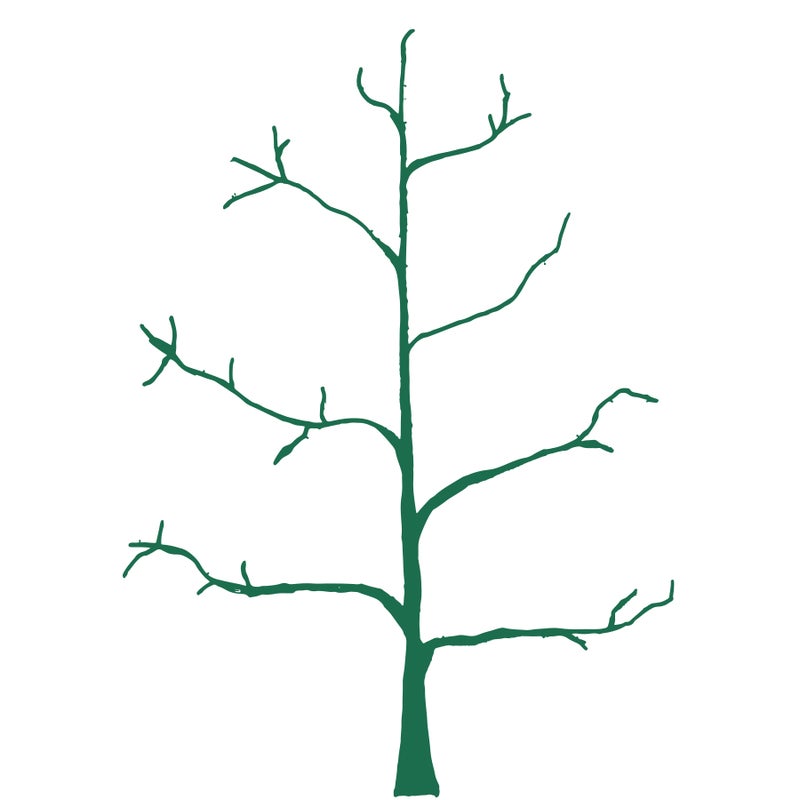
Central leader
Central leader pruning is where there is one main trunk with whorls of branches that start 70–90cm above the ground and then around every 50cm up the trunk, with the shape of a Christmas tree. This allows maximum light penetration of the fruit tree. It can be used on apples and pears. Modified central leaders are recommended for trees that have no branches when planted. It is again recommended for both apples and pears, and for fruit that grows on spurs, which produces a stubby growth on horizontal branches.
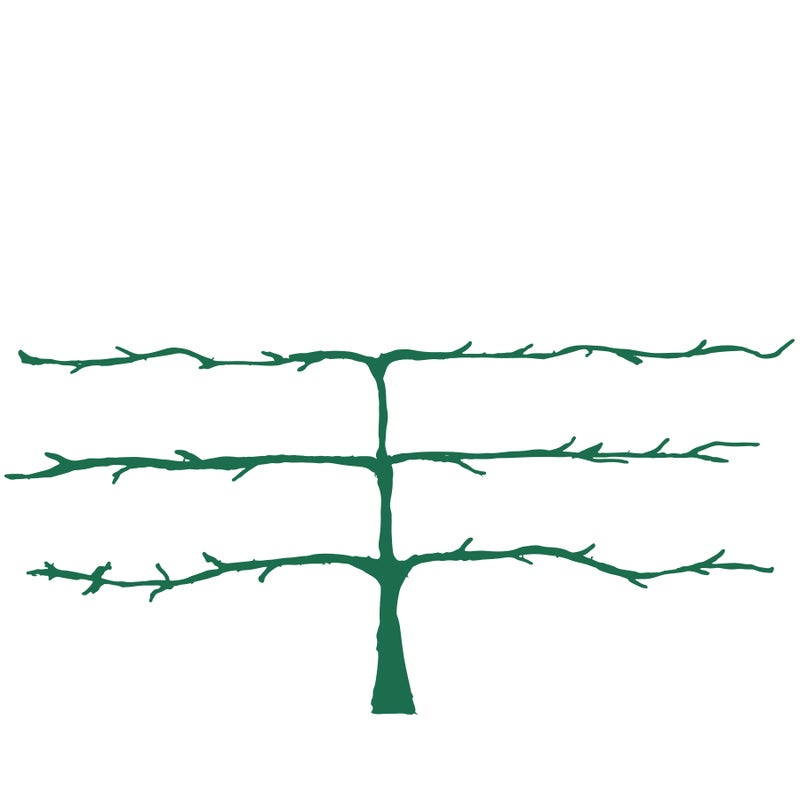
Espalier
Espalier trees are trained to grow against a wall that is north-facing, and can also be trained between posts with wire supports. This is a great way to grow fruit trees if you have minimal space, though it does require more work. Tie the branches from both sides to the support wires with soft fabric to help train the branches. Cut back any branches in between the wires that will not be trained. Cut off the top part of the tree to encourage the energy to be diverted to your trained branches instead. As the branch grows, continue to train it along the wire. There are different types of espalier techniques, including a cordon shape, U shape, oblique, and fan shape. Espalier peaches, nectarines, apples and apricots.
